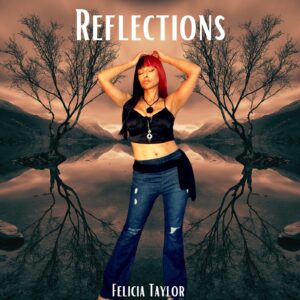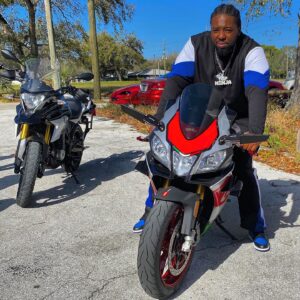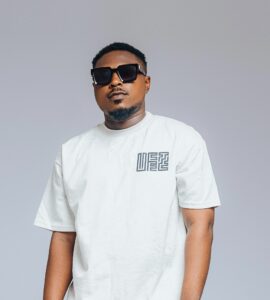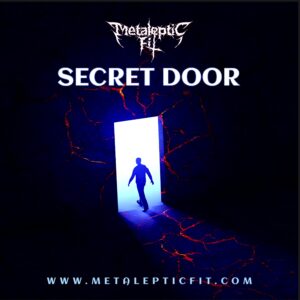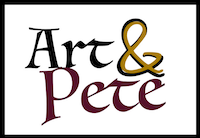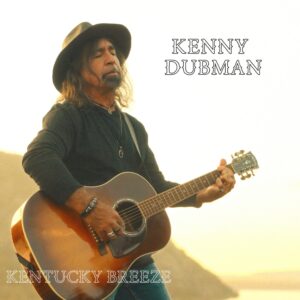
Daniel Johnston’s FUN, 1994
David Alm
I learned of Daniel Johnston the way a lot of people in the 1980s and early ‘90s did: from a dubbed cassette. In my case the year was 1990, and the cassette was a VHS featuring grainy home video of a doughy, 30-year-old man at an electric organ belting out an urgent plea to never sit down at a poker table with the devil.
It might’ve been funny if it hadn’t been so heartwrenchingly serious. Don’t play cards with Satan, he’ll deal you an awful hand, the man sang, his incongruous voice wavering in a high, pre-pubescent pitch, threatening to crack at any moment, his meaty fingers banging on the keyboard, his eyes clenched tight. It was clear to me, even then, that he was mentally ill, but also mesmerizing.
I was 15, and I saw the tape at a friend’s house in eastern Iowa, on the banks of the Mississippi. His cousin had sent it to him from New York, and it had a bunch of other obscure stuff on it as well – some live footage of the Butthole Surfers, the Richard Kern short film Fingered starring Lydia Lunch, and, if I recall correctly, a legit snuff film. It felt like big city contraband trafficked in via the black market, bootlegged bits of weirdness to connect us to the world beyond our little Midwestern town. Of all the clips on that tape, I remember Daniel Johnston the best.
This was when Johnston was still living in Austin, Texas, where he recorded and dubbed his music himself on a boom box. If you had a Daniel Johnston tape in the 1980s, it was likely that it had come directly from him, and that he had personally xeroxed its cassette sleeve featuring one of his childlike drawings of frog-like aliens, flying eyeballs or Casper the friendly ghost. It wasn’t an uncommon way for independent artists to get their music out in the world back then – I knew of plenty of other musicians who self-recorded and -distributed as well – but it was fairly uncommon to come across a tape that was recorded thousands of miles away.
Johnston was already a rising icon by that time, having been featured in a spot on MTV about the Austin music scene and championed by Yo La Tengo and Kurt Cobain, among others. He’d recorded an album with Jad Fair of the punk band Half Japanese, and traveled to New York to work with Sonic Youth and Galaxie 500. On the same trip he took a hit of acid and got lost in Manhattan before winding up in the Bellevue psychiatric hospital. He was released and immediately went to CBGB’s, the famed bygone punk club on the Bowery, to perform.
I didn’t know any of this in 1990. All I knew of Daniel Johnston was what I saw on that VHS tape, and for a few years after that whenever I encountered his audio recordings I’d savor them; I simply never knew when I’d come across another one. By 1993, my freshman year of college, Johnston was still obscure but starting to appear on the margins of the mainstream. I remember driving in a car with someone I’d just met that fall and hearing Yo La Tengo’s cover of “Speeding Motorcycle” for the first time. It felt a little out of place – I doubt the driver knew the original song – but I loved the cover, and was glad to see Johnston getting some recognition.
A year later, Atlantic Records released Johnston’s sole album for a major label, Fun, which I bought on cassette at the one record store in my college town of 14,000 people. It was one of those quintessential college town record stores: tiny but stocked with music you’d never hear on the radio, and owned by a skinny, bespectacled guy who knew everything about all of it. He told me that Atlantic had agreed – and even signed into the contract a clause guaranteeing – that if Johnston required hospitalization at any point while under contract, the label would pay for it. I never verified this, and lawyer friends have since told me it probably wasn’t true, but it seemed to fit Johnston’s mythology: the schizophrenic, bipolar artist whose footing in reality was forever on a crumbling precipice.
Daniel Johnston became a fixture on the soundtrack of my college life. I’d listen to him on long drives and at the coffee shop where I worked. I learned his song “I Did Acid With Caroline” on the guitar and would play it for girls I had crushes on. For most of them, it was the first time they’d ever heard of him. But as much as I liked Daniel Johnston, I still didn’t know much about him. I knew only that in an industry built on image, artifice and contrivances, Daniel Johnston felt unusually, implacably real.
It wasn’t until I saw Jeff Feuerzeig’s admiring 2005 documentary The Devil and Daniel Johnston that I learned of the artist’s childhood in a strict, fundamentalist Christian home, or of his years in Austin, where he worked at McDonald’s while building his massive repertoire of super-short songs, or of his odyssey in New York City. Or, for that matter, of the girl he met in a high school art class who would become his most enduring muse, Laurie Allen, or that the copy of Fun I’d bought in 1994 was one of just 5,000 that Atlantic managed to sell. (The label dropped him two years later.)
By 2005, Daniel Johnston had moved back in with his parents, in Waller, Texas, where he continued to record music and make art – he was even featured in the 2006 Whitney Biennial. His cult status continued to grow, but he was never famous. Several months ago, I saw a teenage boy on the subway in New York wearing a t-shirt with a Daniel Johnston drawing on it. Incredulous that he knew who Daniel Johnston was, I went home and Googled the shirt. Turns out it was sold by the streetwear brand Supreme, with a price tag of $95.
Even most people closer to my own age I’ve talked to have never heard of him, despite the cascade of coverage he’s gotten since he died of a heart attack, at age 58, earlier this week. It’s just as well. Daniel Johnston was of a very different time. And for those of us who discovered him then, he always will be.

